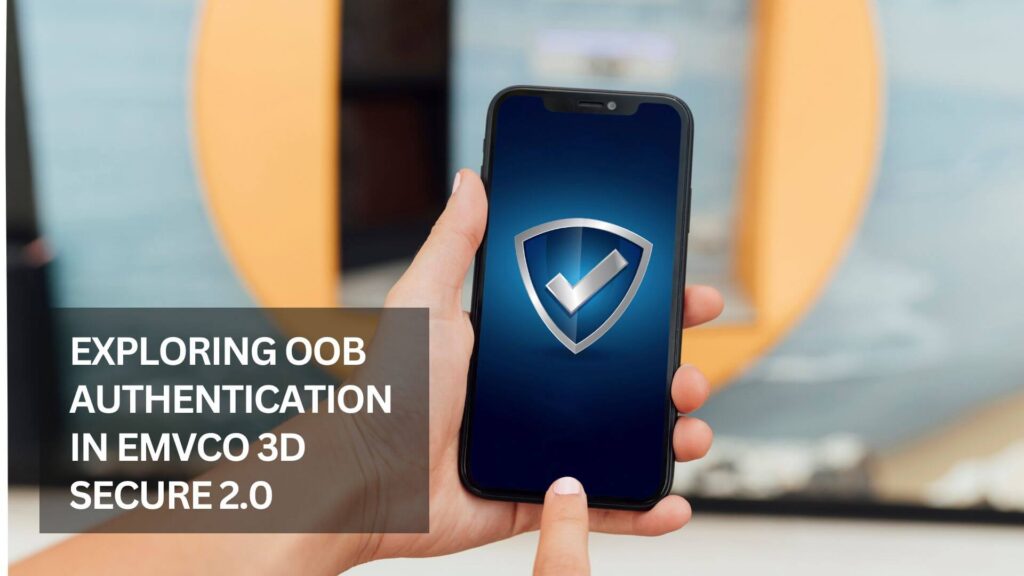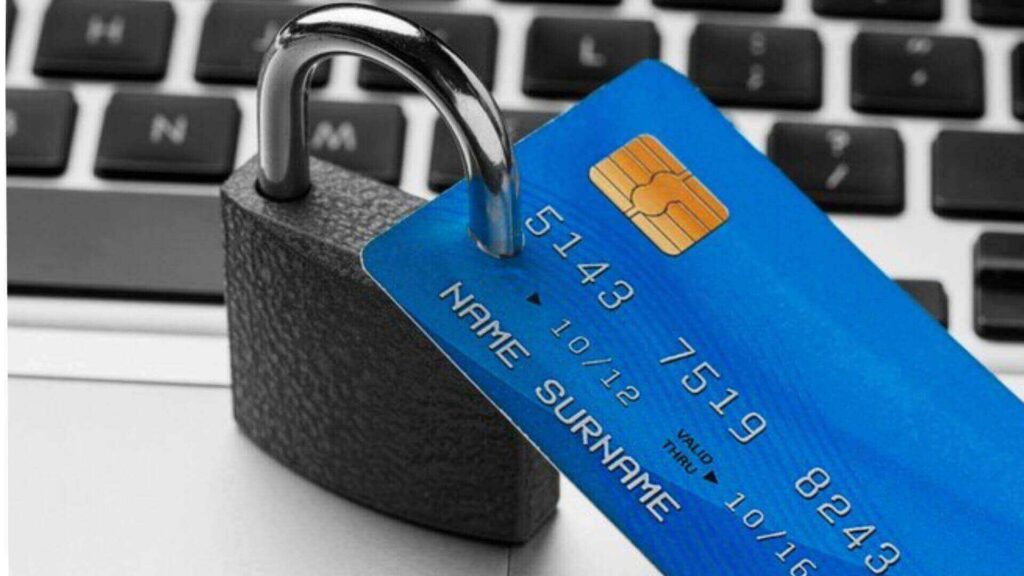4-Month Free Trial Test & Validate your 3DS Products & Authentication Flows with our Free 3DS Sandbox Environment.
4-Month Free Trial Try our 3DS Sandbox Environment.
4-Month Free Trial Test & Validate your 3DS Products & Authentication Flows with our Free 3DS Sandbox Environment.
4-Month Free Trial Try our 3DS Sandbox Environment.

In-band Out-of-Band (OOB) authentication is a security technique that uses two separate communication channels to verify a user’s identity. The key idea is that these channels are independent often involving different networks or devices so that even if one channel is compromised, the other remains secure. This method is particularly effective in protecting against common cyber threats such as phishing, identity theft, and man-in-the-middle attacks.
In the context of online banking and financial services, OOB authentication has proven to be a strong safeguard against unauthorized access. For instance, a bank might require a customer to log in with a password (in-band) and then approve the transaction via a one-time code sent to their mobile device (out-of-band). The separation of these two signals makes it far more difficult for attackers to intercept or manipulate both simultaneously.
In business environments, OOB channels can be used to enforce additional verification steps, especially for sensitive actions like large fund transfers or system access changes. The core principle is simple: even if a malicious actor breaches one channel, the second, isolated layer ensures the overall security of the system remains intact. This layered defense strategy strengthens authentication processes and reduces the risk of system compromise.
Online transactions are safe from fraud in the event that a person who wants to make an online purchase receives a one-time password to a registered phone number. In this scenario even if a rogue person has gained access to the online portal but is unable to access the mobile device renders it inaccessible for the fraudulent activity to be executed. In certain instances, protocols that are related to OOB AUTHENTICATION may be invalidated when the hacker utilizes a sophisticated method to intercept messages over the 4G or 3G wireless network.
However, this technique which is integrated into the EMVCo 3D Secure protocol has been proven to produce the highest-quality results when it comes to ensuring the security of the users. In particular, the interaction of the 3DS Client, 3DS Server, Directory Server (DS), and Access Control Server (ACS) helps in achieving the security objectives possible. With the help of a superior authentication method, EMVCo 3D Secure stands out as a cutting-edge security system that protects users from any kind of malicious action.
The band security is undergoing technological advancements that optimize the user experience and create more advanced mechanisms to protect and comply. EMVCo 3D Secure is certainly the most sophisticated example of this technology and has produced excellent results for cardholders as well as card issuers as cybersecurity threats keep continuing to appear.
The out-of-band authentication process has been redesigned in 3DS2 as compared to previous versions. The process is an interaction between the primary components that include 3DS Client (further classified into 3DS SDK and 3DS Method), [1]. 3DS Client (further categorized into 3DS SDK and 3DS Method) and [2]. The 3DS Server [3]. the Directory Server (DS) and the Access Control Server (ACS).
In the first stage, the customer initiates a purchase using the purchase details that prompts the 3DS-enabled app to ask for the data, and in turn, return the 3DS information. A call is then made on the 3DS server, and the authentication request is then passed to the Directory Server (DS), and in turn, to it is passed to the Access Control Server (ACS) that generates the authentication request.
In this way, the request for the 3DS challenge is created and submitted after the sender is verified with OOB service. The response to the challenge triggers an open display of an alert message to the cardholder. The challenge is complete after the challenge request has been sent via the 3DS server, and then the DS as well as ACS.

The OOB service again determines the requirement for repeat challenges and the challenge response quickly traverses all three ACS, DS, and 3DS servers until it is accepted and recorded in the OOB service. Then an end-of-the-game response was issued to end this 3DS challenge. The app response is then completed with the entire process.
In some instances, consumers may require an extended time to complete the OOB authentication, and it is essential for the SDK to take into account this factor. Therefore, it is essential to set the SDK timeout feature to be configured accordingly to prevent any discomfort for the user and make sure that everything goes smoothly.
As previously mentioned, OOB authentication is known as the most efficient way to prevent fraudulent attacks, especially in the instance of transactions made online, in which users are at risk of being hacked and phishing attacks.
The main advantage of OOB authenticating in 3DS2 is that the issuer has the benefit it gives them complete control over the methods used to authenticate cardholders. There are many methods for issuers to choose according to the way they want to structure their services, including biometric authentication, which includes facial, voice, and finger recognition, as well as tokens and passwords that are sent via email or SMS.
In this context, it is the ACS is managed by the issuer of cards and is responsible for determining if the 3D Secure authentication is accessible for a particular card number. The ACS performs the OOB interactions with the cardholder, instead of communicating with the cardholder via 3DS SDK. In the course of when the OOB authentication process occurs the cardholder will send an authentication signal either to or both the ACS or the card issuer who is involved in the exchange in the interaction with the ACS.
After the OOB contact the cardholder, The ACS will collect information about what happened to the card and whether it was successful. One example is a push message that is an OOB communication. It occurs when an app is activated to finish the authentication process and send the result to the ACS.
Out-of-Band (OOB) authentication offers a range of benefits across security, reliability, usability, and communication making it an ideal solution for protecting users while allowing card issuers to tailor the experience to customer preferences. In the context of 3D Secure 2 (3DS2), OOB authentication enhances the verification process through a structured flow of actions, challenges, and responses, ensuring robust security without sacrificing user experience.
Unlike earlier versions of 3D Secure, which often disrupted the checkout process, 3DS2 with OOB authentication supports smoother, more seamless online transactions whether conducted through web browsers or mobile apps. This approach leverages secure protocols that not only strengthen data protection but also offer greater flexibility and convenience for users.
OOB authentication in 3DS2 strikes the right balance between security and usability. It’s a forward-thinking framework that adapts to evolving threats while maintaining a frictionless experience for legitimate customers ultimately reducing cart abandonment and boosting consumer trust in digital payments.
With many years of rich experience in technology development, Logibiz Technologies aim to boost your online presence by offering 360-degree solutions related to Online Payments and its Security.
From Online Fraud Prevention solutions to White Label Payment Gateway Platform and complete 3DS testing environment, Logibiz has got your back. Additionally, we also offer consultancy services for all your EMVCo & Card Scheme certification needs.
We provide Free Demo & POC of our products which are certified globally and trusted by leading Financial Institutions worldwide.
Book a Free Consultation Call with our experts to discuss how we can help grow your online payments business.
Test your 3DS Products with a 4-Month Free Trial of our 3DS Sandbox Environment.
Try 4-Month Free Trial of our 3DS Sandbox Environment.
We provide Tailored Payment Solutions for PSPs, Payment Gateways, Banks and Merchants with a complete range of top-tier payment gateway platforms, robust authentication solutions, and cutting-edge testing tools.
We’ll update you on our upcoming events, newsand publications.
Test & Validate all your 3DS Products & Authentication Flows with a 4-Month Free Trial of our 3DS Sandbox Environment.
Try our solutions for free! Sign up now and see how we can help you.
Explore our comprehensive services. Download our brochure for detailed information on our offerings and solutions.
The 3DS Server provides a functional interface between the Directory Server (DS) and the 3DS Requestor Environment flows. 3DS Server is responsible for gathering necessary data elements for 3-D Secure messages, authenticating the DS, validating the DS, the 3DS SDK, and the 3DS Requestor, safeguarding the message contents. The 3DS Server also helps to protect the message content while it is being transferred to DS and vice versa.